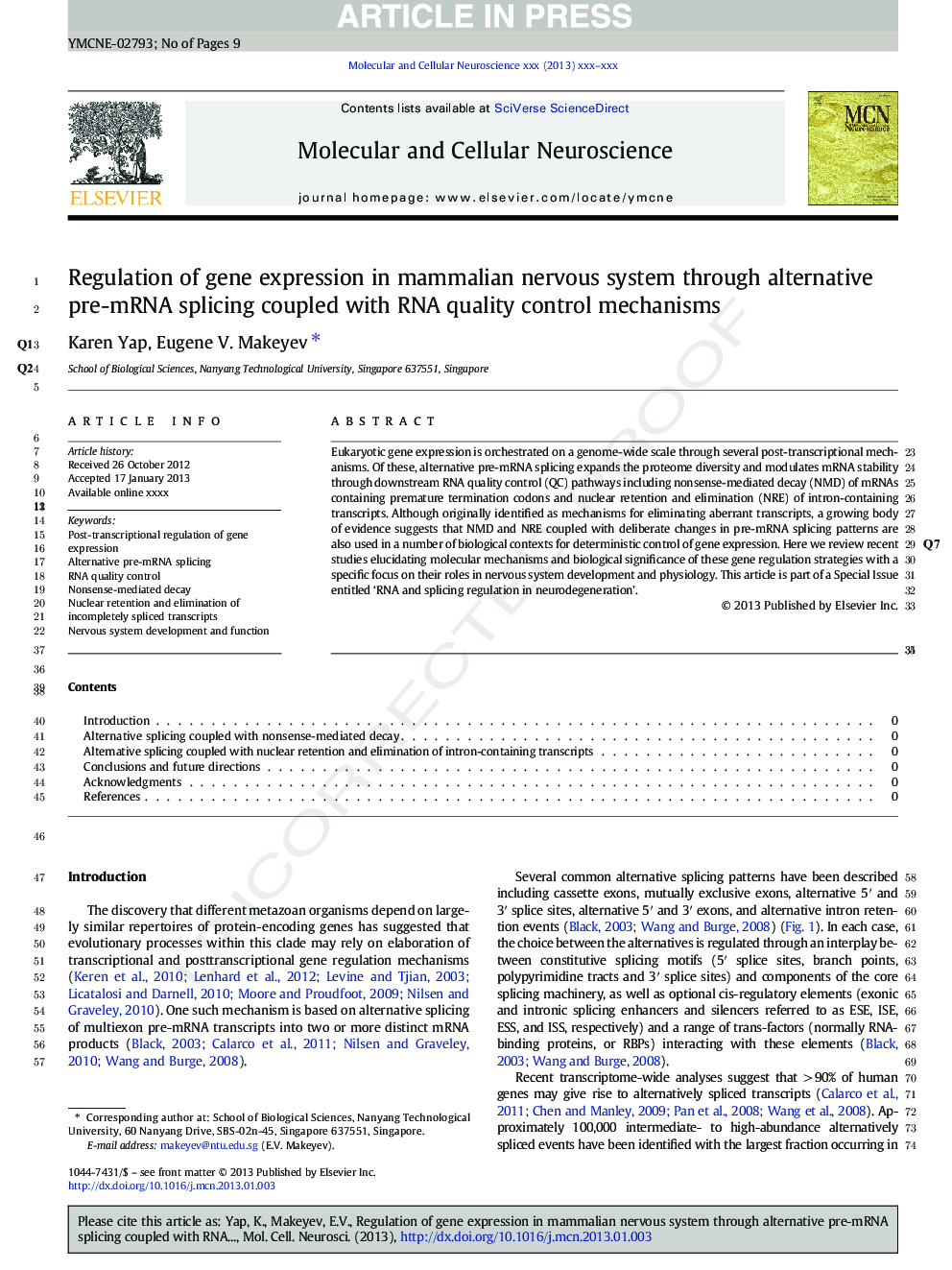| Article ID | Journal | Published Year | Pages | File Type |
|---|---|---|---|---|
| 8478681 | Molecular and Cellular Neuroscience | 2013 | 9 Pages |
Abstract
Eukaryotic gene expression is orchestrated on a genome-wide scale through several post-transcriptional mechanisms. Of these, alternative pre-mRNA splicing expands the proteome diversity and modulates mRNA stability through downstream RNA quality control (QC) pathways including nonsense-mediated decay (NMD) of mRNAs containing premature termination codons and nuclear retention and elimination (NRE) of intron-containing transcripts. Although originally identified as mechanisms for eliminating aberrant transcripts, a growing body of evidence suggests that NMD and NRE coupled with deliberate changes in pre-mRNA splicing patterns are also used in a number of biological contexts for deterministic control of gene expression. Here we review recent studies elucidating molecular mechanisms and biological significance of these gene regulation strategies with a specific focus on their roles in nervous system development and physiology. This article is part of a Special Issue entitled 'RNA and splicing regulation in neurodegeneration'.
Related Topics
Life Sciences
Biochemistry, Genetics and Molecular Biology
Cell Biology
Authors
Karen Yap, Eugene V. Makeyev,
